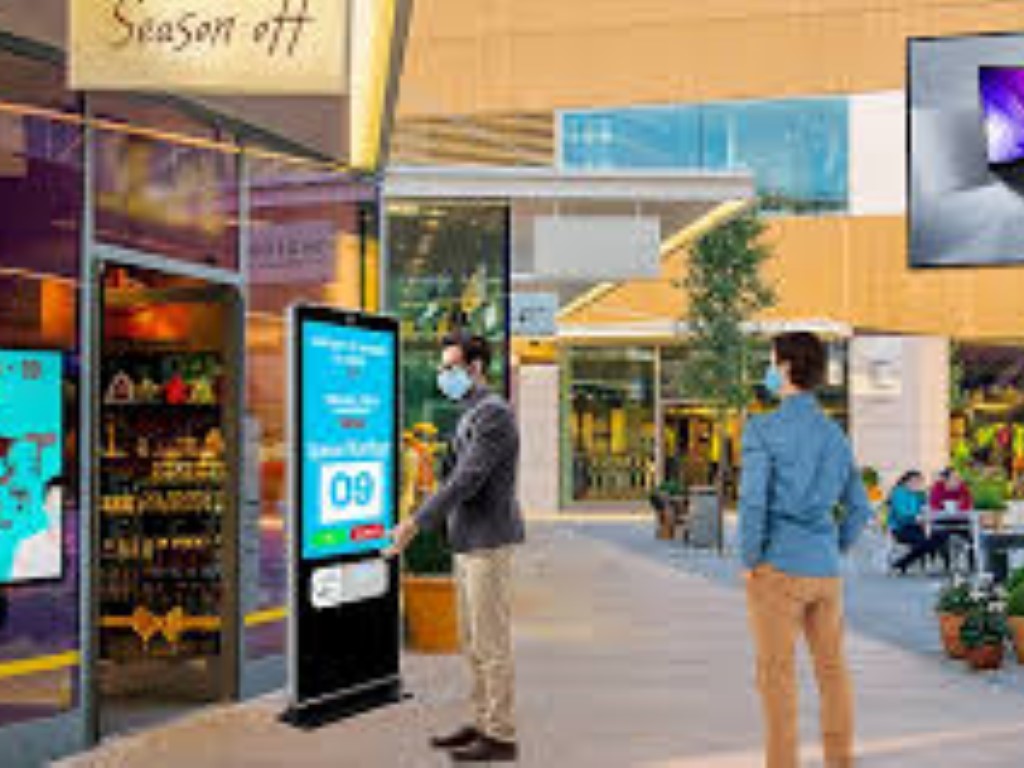
What is digital signage?
Digital signage is a digital installation that displays video or multimedia content for informational or advertising purposes. We see it everywhere. We’ve gazed at advertisements at bus stations, found gate information at the airport, ordered food in fast food restaurants, bought movie tickets, and pulled up directions at museums, all thanks to digital signage. There are endless uses supporting a diversity of businesses and audience needs. In fact, the digital signage market is expected to grow from USD 20.8 billion in 2019 to USD 29.6 billion by 2024, numbers hinting at the enormous impact and potential lying within. As digital signage increasingly impacts our lives and presents opportunities for the business world, its capabilities are also evolving from a passive system that pushes content to a more advanced system that connects, interacts, and pulls content from diverse sources in real-time.
How do you define what digital signage is? In this article explores the definition, scope of use, and potential of digital signage.
What is the definition of digital signage?
Let’s try to get our heads around it. Wikipedia writes that “digital signage” is a subcategory of electronic signage, which, in turn, is defined as display technologies such as LCD, LED, projection, and e-paper. That’s fairly unhelpful. Digital Signage is much more than just the hardware. Understanding today’s digital signage requires consideration of its roles, functions, and technical capabilities.
What we can say is that digital signage is comprised of three key components:
- Digital Signage Content – An inventory of audio, video, image, graphics, text, and more, assembled to tell unique stories for any number of unique intents.
- Digital Signage Hardware – The physical, tangible components like screens, mounts, payment devices, printers, cameras, etc.
- Digital Signage Software – The digital infrastructure enabling the creation, deployment, management, and analysis of content deployed on the hardware.
Let’s break these three components down.
What is digital signage content?
What is digital signage content? The simple notion of content is anything displayed on a screen, including text, images, animations, video, and audio. However, “content” can also refer to the collective result of combining various media to tell a story. Here it’s about the overall experience imparted to the target audience. Dynamic digital content entices visitors or passers-by to stop, captures and engages them via interaction, and collects information for business insight. Such digital sign content can even be personalized in real-time through integrations with back-office systems.
Types of Digital Signage
There are various examples of digital signage that engage your guests. Here are some examples of the most common types of digital signage, based on usage scenario:
- Public Signs- location-specific information (news, weather, traffic, etc.), maps, wayfinding
- CorporateSignage- knowledge sharing, meeting room booking, meeting coordination, training
- Sales Signage- product/service portfolios, whiteboarding, demonstrations
- Tourism & Wayfinding Signs- wayfinding, points of interest, city information
- Retail Signage- self-check-out, endless aisle, product showcase, smart mirror
- Restaurants Displays & Signs- self-service, digital menu board, self-ordering kiosk
- Marketing Signs, Motion Graphics & Ads- promotions, ambiance, gamification
- Museums Signage- gallery, wayfinding, digital tours
- Education based Signage- classroom teaching, wayfinding, library exhibitions
- Exhibit & Tradeshow Displays & Signs- interactive product/service catalogs, visitor registration, networking






